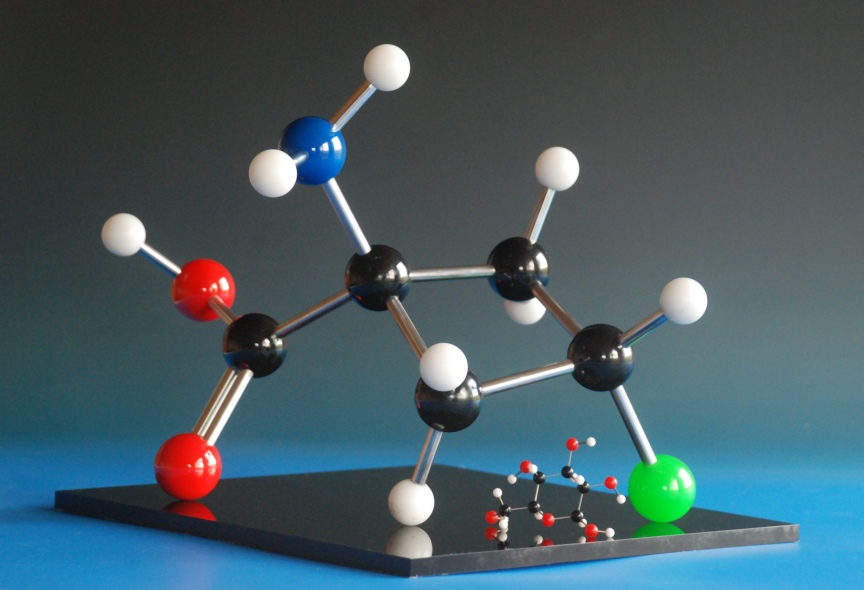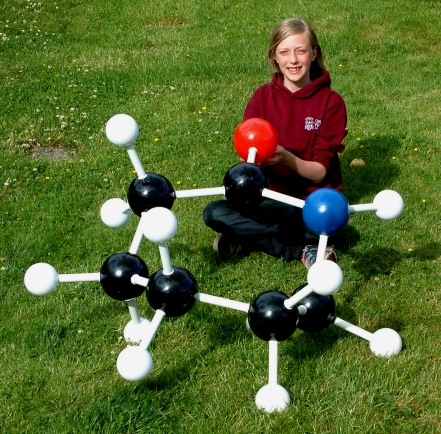
 |
 |
Our small Beevers molecular models and crystal structure models are ideal in some circumstances, but not all. When you have a large space to fill, or you need people to see your molecule from a distance, you probably need either a large or a giant molecular model.
Our large molecular and crystal structure models start with balls of around 18mm through to 60mm diameter ( 2.5 - 9cm / Å), with options for acrylic, phenolic or wooden balls, depending on the finish and weight of model you need, and your budget.
Our giant molecular models range from 60mm diameter through to around 150mm diameter ( 9 - 22 cm / Å) and are distinguished from the large models in the way that the bonds are attached. The balls are lightweight hollow polypropylene and can be suspended from a ceiling, for example, with no difficulty.
Red-green anaglyph of a model of spinel, made with balls in proportion to the ionic radii of the Mg, Al and O ions.
Multiple bonds in our models
One incidental advantage of these models over the Beevers models is that double and triple bonds can be explicitly shown in the model. All of our larger scale models (including our giant molecular models) can be made with double bonds, triple bonds or quadruple bonds as part of the structure. We have never attempted quintuple or sextuple bonds and, given their extreme rarity, we doubt that we'll ever need to, but we could include them in larger models if it were ever necessary. Similarly, we can include multiple bonds in allenes, cumulenes and similar structures.
For bond orders of 3 and above, our default design is to have the bonds symmetrically arranged around the bond axis, rather than to have the rods in a line, but we also offer other arrangements as the customer prefers. So, a triple bond cut across its axis would have three rods at the corners of an equilateral triangle rather than looking like a double bond with an extra bond added in the middle. A quadruple bond would be arranged with either four bonds in square, or a central bond and three surrounding bonds in an equilateral triangle.

Preferred arrangements of multiple bonds (green) and other common options